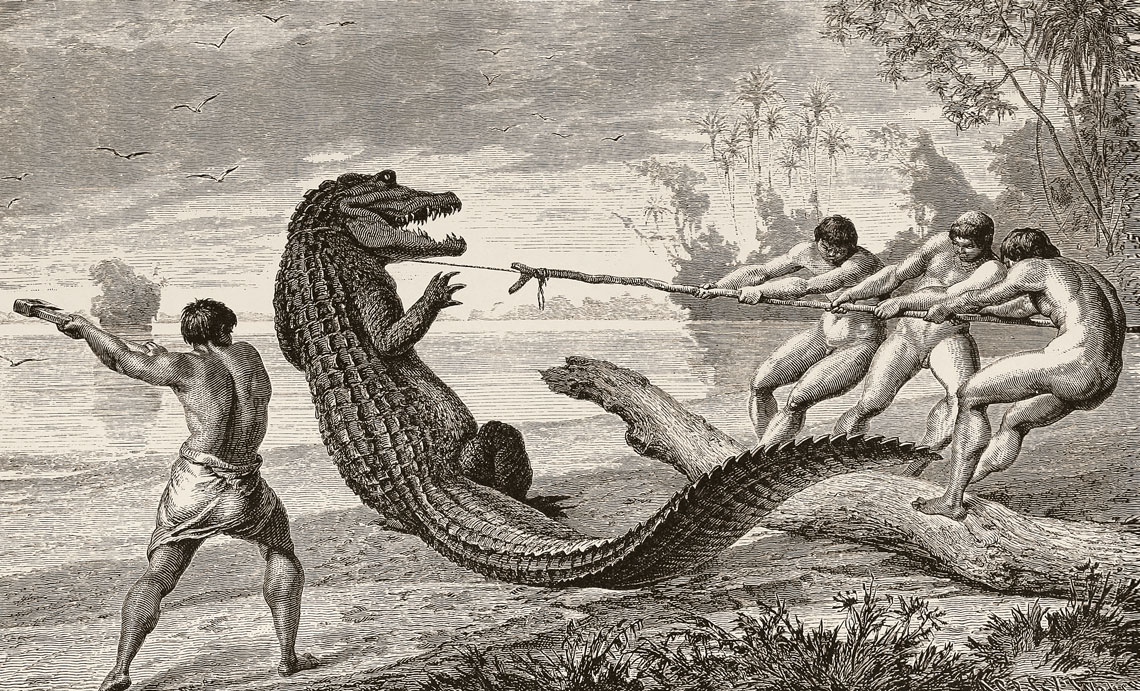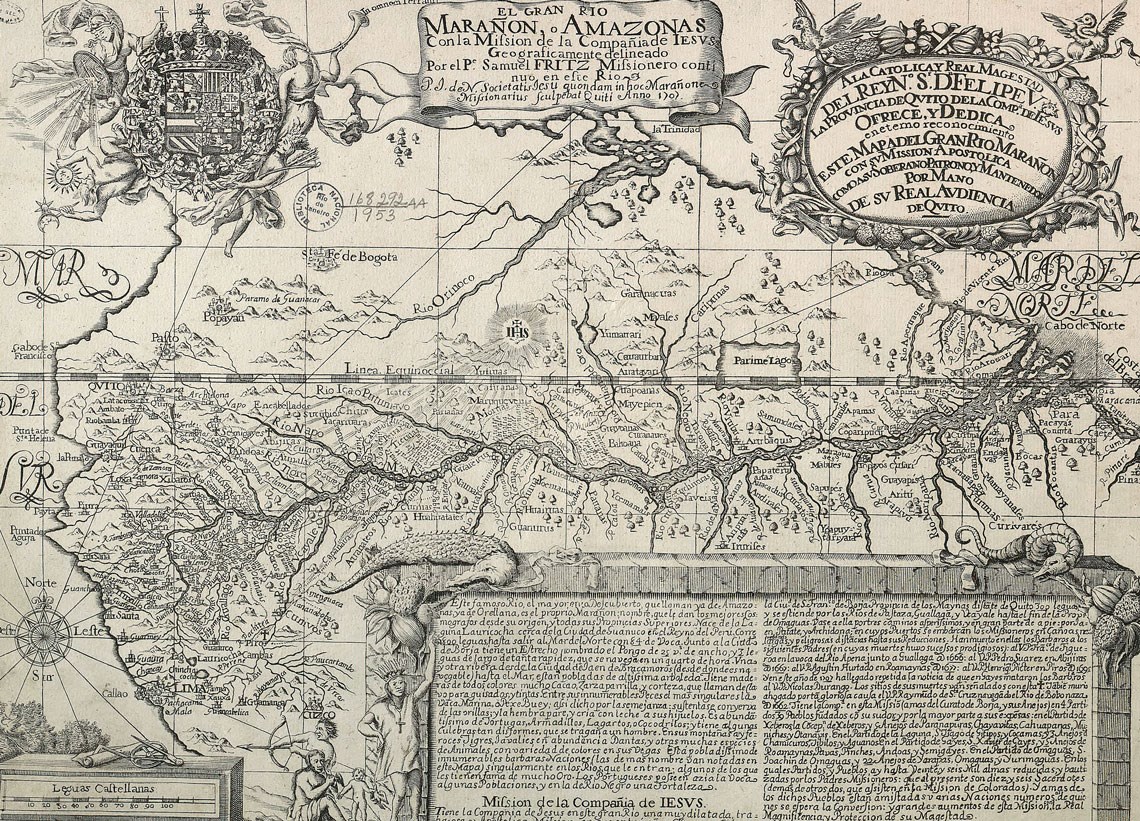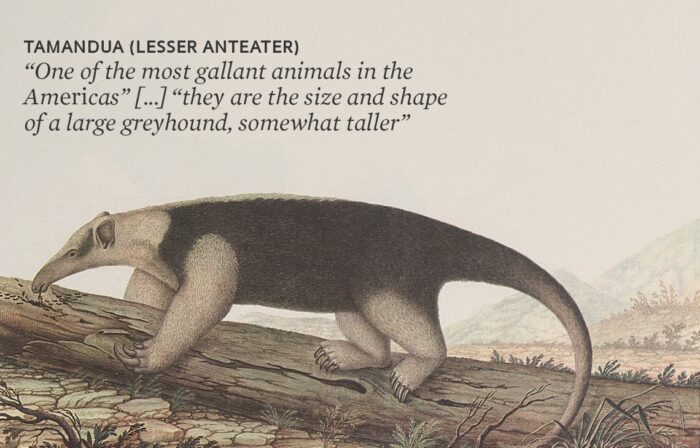While living in Brazil, during the first three centuries of the colonial period, the Jesuits built schools, taught the Indigenous peoples, wrote long letters to their colleagues in other countries, and traveled regularly. One such Jesuit, João Daniel (1722–1776), of Portugal, arrived in Brazil at the age of 19, completed his schooling at Colégio de São Luís, in São Luís, then capital of the state of Grão-Pará and Maranhão, and spent 16 years traveling through villages and towns in the Amazon region to fulfill his role as a missionary.
His wanderings ended in 1757 because of a law enacted by the Secretary of State of the Portuguese Empire, Sebastião José de Carvalho e Melo, the Marquis of Pombal (1699–1782), which terminated the work carried out by Jesuit missionaries, who were opposed to Indigenous enslavement. Deported in 1757 with nine other missionaries, Daniel spent four years in a northeastern Portugal prison and another 16 in São Julião da Barra, a military fort near Lisbon where he died. While in prison, to occupy his time and, as he noted, “to cheat the lack of sleep,” he wrote 766 pages of the book Tesouro descoberto no máximo rio Amazonas (Treasure discovered on the Amazon River), which became a reference work on the region in the eighteenth century, with impressions about the rivers, plants, animals, and Indigenous peoples.
“He probably had some notes, because there are references to other books that he was unlikely to have in prison,” comments Henryk Siewierski, Polish professor of literary theory at the University of Brasília (UnB). The Jesuit wrote almost entirely based on his memory of the years he spent in Brazil, reinforced by information from other imprisoned priests deported from the Amazon Region.
Under the circumstances in which it was written, and the interruptions caused by paper shortages, Siewierski considers it lucky that the manuscript has survived since 1810 and that it has been “very well kept,” as he himself verified at the Brazilian National Library. Dom João VI (1767–1826) sent the first five parts of the book to the National Library. He brought them with him when he moved with the Portuguese Corte to Rio de Janeiro, in 1808; the sixth part was later found at the Évora Public Library, in Portugal. Starting in 1820, parts of the book were published in Portugal and Brazil. The book was published in full in Brazil by the National Library and once again, in 2004, by the Contraponto publishing house, in two volumes, with 1,224 pages.

Caiman “it is a monster commensurate with the river’s grandeur. There are caiman 40 to 50 palms in length, with proportionate thickness, like an ordinary wooden barrel, mainly in its core”The Amazon and Madeira Rivers, Franz Keller, BBM
Settled in Brazil since 1986, Siewierski read Tesouro after traveling along the Xingu, Tocantins, and Marajó rivers with fellow anthropologists, biologists, linguists, and geographers on expeditions organized by the Federal University of Pará (UFPA) from 2002 to 2005. He then wrote a chapter about the missionary in the book Raj nie do utracenia. Amazonskie silva rerum (The Amazon, paradise that cannot be lost), published in Polish in 2006, and a study with a selection of excerpts from Tesouro, o Livro do rio máximo do padre João Daniel (Treasure, the book about the Amazon River by Father João Daniel; Educ, 2012).
“João Daniel is a heartfelt voice in defense of Indigenous peoples and the Amazon, seen in and of itself as a treasure that must be cared for,” he says. “The Portuguese priest does not cease to evangelize, but recognizes the importance of Indigenous culture and myths, and criticizes evangelism by any means.” According to the Polish researcher, conversion should be obtained through spiritual advantages, such as the possibility of eternal life, not in exchange for instruments that facilitate work, such as machetes and hoes.
In an article with the historian Zady Alberto da Silva, published in 2014 in Revista Ultramares, German historian Karl Heinz Arenz, of UFPA, compared Daniel’s views on the Indigenous peoples to those of two other Jesuits: António Vieira (1608–1697), of Portugal, who lived in Maranhão from 1653 to 1661 and who authored Six Sermons (Oxford University Press, 2019); and João Felipe Bettendorff (1625–1698), of Luxembourg, who wrote Crônica dos padres da Companhia de Jesus no estado do Maranhão (1627–1698) (Chronicle of the priests of the Society of Jesus in the state of Maranhão; IHGB, 1910) and who lived in the region for 37 years. “Vieira was idealistic and paternalistic; Bettendorff defended only the enforcement of religious standards; and Daniel was disillusioned, writing that the Indigenous peoples were savage and ‘extremely tenacious and mysterious,’ they sometimes spoke nonstop and other times they were silent, which helped to explain the slow progress of evangelism,” he comments.
Author of Valente para servir: o padre João Felipe Bettendorff e a Amazônia portuguesa no século XVII (Brave enough to serve: Father João Felipe Bettendorff and the Portuguese Amazon in the 17th century; Caravana, 2022), Arenz arrived to Brazil in 1990 and spent six years living in Oriximiná, Pará, where he worked as a missionary who trained community leaders. He read Tesouro while completing his doctorate in modern and contemporary history in Paris. “Like other missionaries,” he adds, “Daniel was impressed to see that the Indigenous peoples did not covet wealth, nor did they judge others according to their possessions.”

